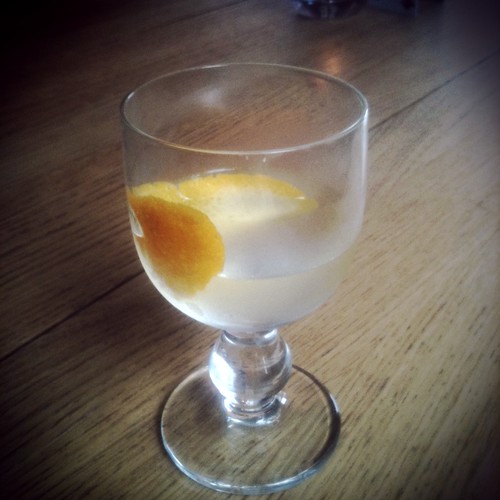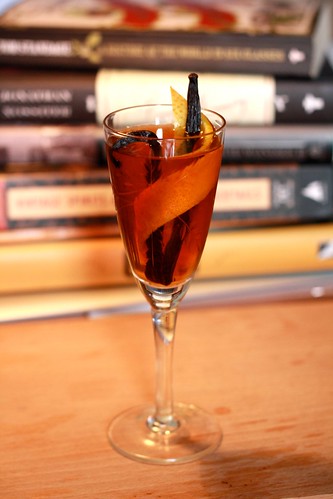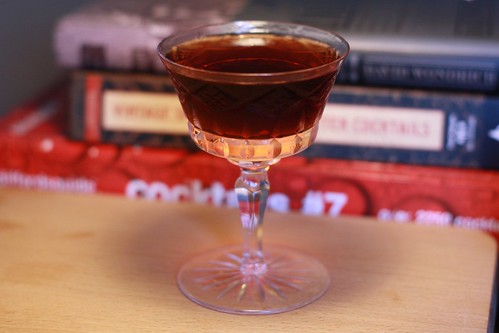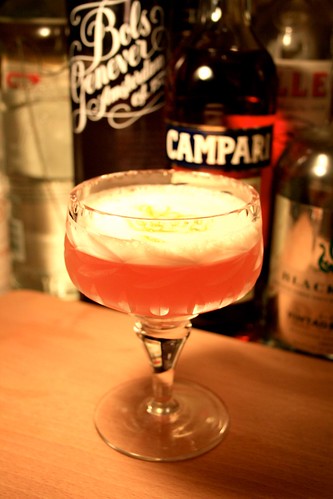So cocktail masterclasses have become a thing. This isn't news but it turns out it's not a passing craze either. Having been hosting them for birthday or hen (US translation: bachelorette) parties and other groups for a couple of years, I've settled into a pretty standard format. Over the course of two hours or so, we'll do three drinks for everyone in the group - everyone gets a chance to make a drink and then we'll spend some time putting together drinks based on suggestions from the group.
The first round of drinks, though, is usually sitting ready for the guests' arrival. It's a nice welcome and it's usually something with a touch of Champagne or Prosecco, just so the group get a sense that it's a special occasion. If I'm honest, it's usually a Bellini.
The Bellini is a fine drink - it's simple, it's tasty, and from a bar-geek's point of view, it's one of the few drinks that we can attribute to a specific person (one Giuseppe Cipriani, who invented it in Harry's American Bar in Venice in the mid-late 1940s). The only thing about the Bellini is that it's, well, kinda boring.
Part of the appeal of a cocktail masterclass is pulling back the curtain on how you actually make cocktails. For the most part, we don't go into any great depth but guests get enough info to be able to start making drinks at home if they wanted to. While the Bellini is a great tasting drink, there's a sense in which it sets the bar at a really low level: put some peach purée in a glass, top it with Prosecco. Once you realise that's all it takes, it's a little disappointing.
So, for the last couple of classes I've done, I've tried a new drink to say hello with. It needed to retain a sparkling wine element and I needed to keep the flavours on fairly common ground - it's a drink that I'm serving to people before I've had a chance to even talk to them, so I had to be confident that it would be a crowd-pleaser.
Spring is just hitting its stride in the UK, so I looked at flavours that embody that sense of freshness and carry a floral connotation. The obvious one was elderflower - so 2009, but still - and one of it's natural partners is pear. I wanted to keep a string British identity, so gin was the logical choice for a base spirit. I wanted to go for something very l
Iight in character, with strong floral notes. The drink works very well with Greenall's BLOOM and Darnley's View, but the best response I got from a masterclass group was when I used Bombay Sapphire. Part of that could be down to pure and simple brand recognition, but part of me thinks that the simplicity of the drink works well with the simplicity of the gin.
(I feel like I should point out that this is all stuff I did at work; we didn't receive any free stock for it and this drink doesn't come under any brand agreements we have in force. The products I've listed are the ones I chose to try out.)
Mirrorball
10ml Bombay Sapphire Gin
10ml Xante
5ml elderflower cordial
1 dash Peychaud's bitters
Prosecco
Stir the first four ingredients with ice and strain into a chilled flute. Top with Prosecco and garnish with a twist of grapefruit zest.
For me, it's a recipe that does exactly what I want it to and the response so far has been really good. One thing stands out - I'm using the Mirrorball in place of the Bellini in my masterclass presentations and despite not having anything peach-flavoured in it, there's one flavour everybody says they get from it.
Peach.




